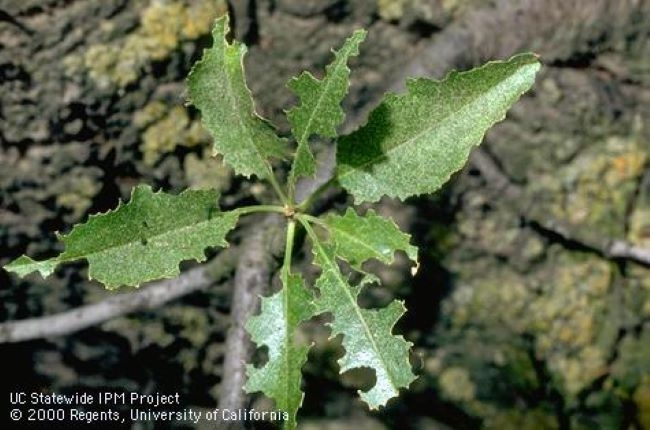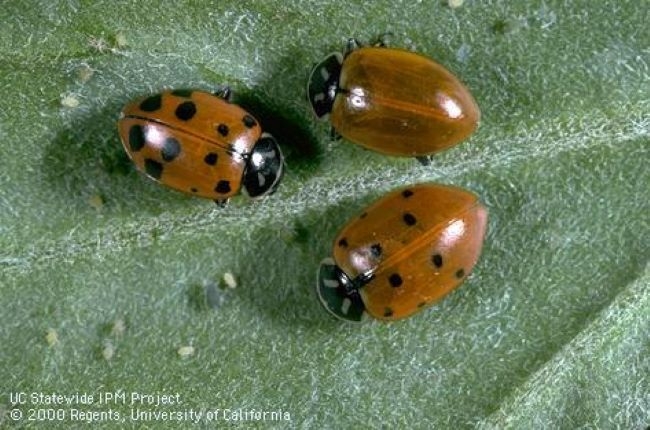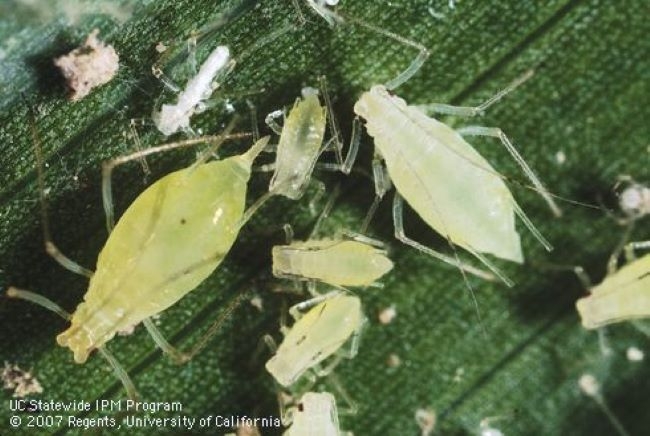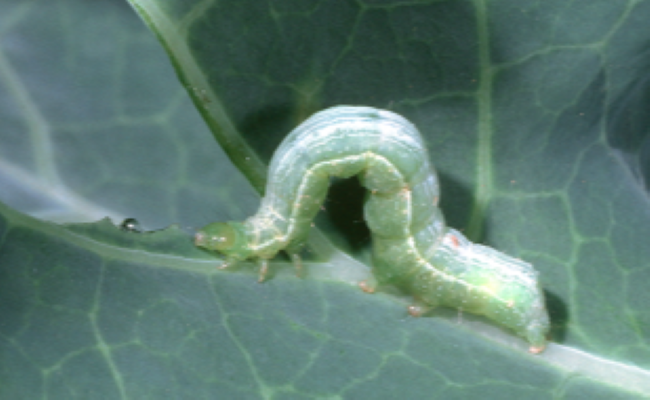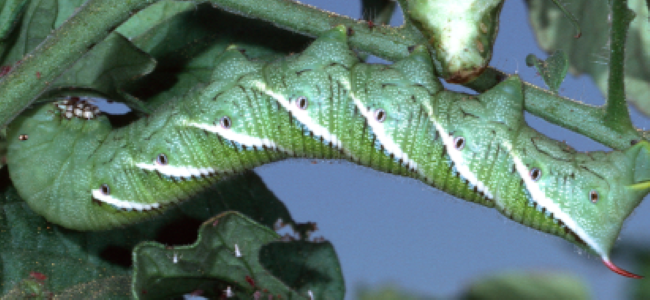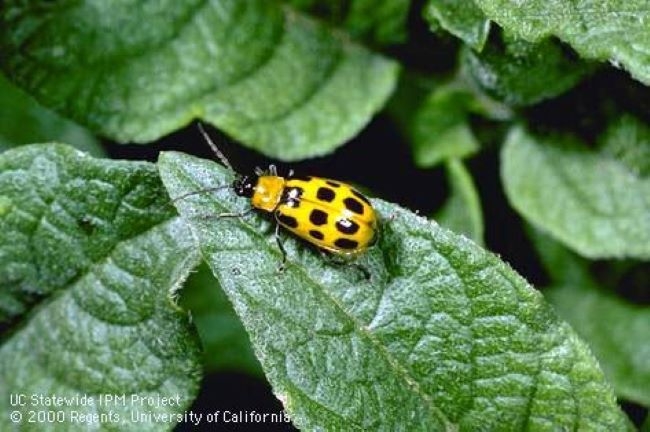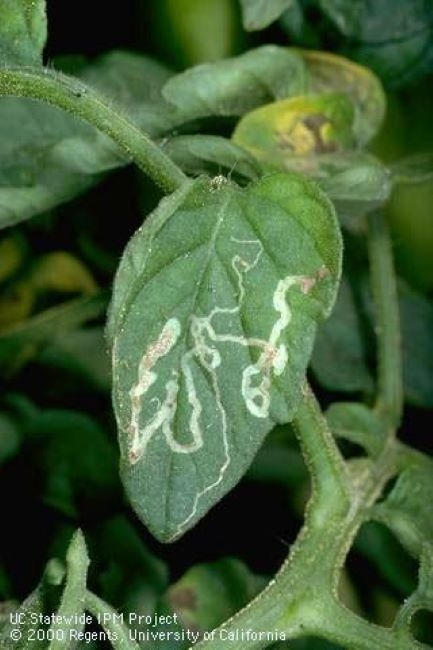- Author: Jim Farr
Summer is a wonderful time for vegetable gardens, with plants thriving under the warm sun. However, it's also the peak season for pests, which can threaten your hard-earned harvest. Here's a guide to help you effectively identify, prevent, and manage common summer vegetable garden pests with safe, organic methods.
Some Basic Principles for Dealing with Summer Pests:
-
Pests Are Natural: Don't get overly concerned because you see insects and other pests in your garden. They are a natural part of having a garden and cannot be avoided. Your garden is a buffet for bugs but the approaches below will help you minimize the damage they might do.
-
Pests Have Specific Plant Favorites: Pests tend to be specific about the plants they eat. Knowing the affected plant narrows down considerably the possible pests.
-
Most Common Pests Have Safe, Natural Solutions: For most pests, there is a safe solution to getting rid of it.
-
Look for Pest Infestations After Changes in Weather: When the temperature changes suddenly from cool to warm or we get prolonged dry periods, insects often come out in high numbers, especially ants.
-
Avoid Untested Information and Home Formulas From the Internet: Rely on trusted research-based sources like information from the University of California Integrated Pest Management (IPM) and Master Gardener websites.
-
Always Follow Label Instructions On Any Product You Use: First, check that the product will work on the particular target and then follow all mixing instructions exactly. More IS NOT better.
A Systematic, Science-Based Method for Dealing with Pests: Integrated Pest Management (IPM)
In 1979 the Statewide IPM program was established at the University of California to provide a research-based foundation for pest management for both commercial and home gardens. The key steps are outlined below:
-
Identify pests, their hosts and beneficial organisms before taking action. Finding the right solution depends on identifying the right target. Identifying the pest and applying the right solution will give you the best chance of mitigating or eliminating the pest.
-
Establish a damage threshold for the pest. What is acceptable damage and what is the point where the pest needs to be dealt with? Not all plant damage is bad. This is an important point. Every garden will have pests, sometimes the damage is minimal or inconsequential to the purpose of the plant. Damage to a leaf on a plant where you eat the fruit may not be an issue. Pesticides can damage the ecology of your garden by killing beneficial insects.
-
Evaluate and implement control tactics. Apply the safest, best environmentally sound solutions first.
-
Monitor, evaluate and document the results. Write down what solutions worked and what did not for future reference. Don't expect immediate results but monitor to see changes over time. Sometimes the pests return but in smaller numbers where they can be more easily managed.
Common Summer Garden Pests
Insect pest populations grow fast during the spring and summer with the oncoming heat. Plants should be monitored for insects and insect damage frequently throughout the spring and summer.
-
Ants: extremely common, sometimes swarm after rain storms or in hot weather. The best treatment are borate (similar but not the same as borax) based baits. These are attractive to ants that take them to their nest where it eventually kills the colony.
- Aphids: aphids (color varies) are common on many warm-season vegetables. Ants, lady beetles (ladybugs) and honeydew (a sticky substance that aphids produce) are often signs that aphids are present. Hose them off plants or prune out infestations when necessary. Encourage their natural enemies by growing flowers in your vegetable garden area that attract beneficials. Aphids have many natural enemies: ladybugs and their larvae, lacewings, beetles, and parasitic wasps. Natural, insecticidal soaps such as Neem Oil can also be effective.
-
Caterpillars: Most caterpillars such as cabbage moth larvae, hornworms, loopers, cut worms, army worms etc, all can be treated with BT (Bacillus thuringiensis), a non-pathogenic microbial mix that kills all types of caterpillars. Using a floating row cover garden bug netting reduces the need for pesticides. If you see moths around your vegetables remember, that's a sign you may see caterpillars soon. For larger caterpillars like tomato hornworms, the best management is to hand-pick. Note: caterpillars are a valuable food source for your backyard birds.
-
Cucumber Beetles: a small (1/4”) beetle most commonly found on vegetables in the cabbage family. Easily identified by the distinctive dots or stripes on yellow-green wing coverings. They are large enough to remove by hand or if necessary use insecticidal soap on nymphs.
-
Earwigs: common in just about every garden. Small populations may not be an issue. Eliminating the places they hide in moist, dark locations can help. If they start causing substantial damage, a safe, soil bacterial-based mixture with Spinosad can be used. However, if you see the presence of beneficial insects around your plants do not use Spinosad.
-
Leaf Miner: easily identified by the random white tracks on the leaves of vegetable plants. The tracks get wider towards the end of the tracks. Watch for damage on leaves throughout the growing season. Brush off eggs from the back of leaves. Remove affected leaves. No spraying is necessary or advisable. The best solution is to catch this early and remove affected leaves which greatly reduces the future damage by eliminating growing larvae in the leaves.
-
Snails & Slugs: eliminate hiding places, hand pick and destroy. Iron-based pesticides are very effective, and provide the added benefit of providing iron to the plant. Tip: snails hide during the day and can be found often hiding in leafy greens such as swiss chard for example. Most likely you will not see slugs and snails during the day.
-
Squirrels, rats and birds: vertebrate pests are best managed by methods that exclude them from the garden. Cover seeded areas and young plants with floating row cover (sometimes referred to as agricultural cloth) or make cages out of netting. Large netting will hurt birds - use finer netting to reduce injury to birds. Plants that are very attractive to pests may need to be protected through the season.
Some Useful Prevention Tips for Insects and Diseases:
-
Healthy Soil: Start with healthy, well-draining soil. Healthy plants are less susceptible to pests. Add organic matter to improve soil structure and fertility.
-
Crop Rotation: Rotate your crops each year as space allows to prevent pests, soil bacteria and viruses from becoming established in one area.
-
Proper Watering: Water early in the morning to allow foliage to dry before evening; this reduces the risk of fungal diseases that attract pests.
-
Mulching: Use mulch to retain soil moisture, suppress weeds, and help to prevent some pests from accessing your plants.
Some Common Organic Control Methods for Dealing with Insects:
-
Handpicking: For larger pests like tomato hornworms and squash bugs, handpicking is an effective control method. Drop them into a bucket of soapy water.
-
Neem Oil: This natural insecticide disrupts the life cycle of many pests. Spray it on affected plants, ensuring you cover both sides of the leaves until dripping wet..
-
Insecticidal Soap: Effective against soft-bodied insects like aphids and spider mites. Spray it directly on the pests.
-
BT (Bacillus thuringiensis): A safe, bacterial-based pesticide that targets a wide variety of leaf eating caterpillars. Read more about less toxic pesticides in this from the UC Integrated Pest Management Quick Tip online or as a downloadable pdf.
-
Beneficial Insects: Encourage beneficial insects like lady beetles, lacewings, and parasitic wasps by planting a variety of flowering plants. These insects prey on common garden pests. When they are present they can be highly effective in controlling infestations.
Dealing with summer vegetable garden pests requires vigilance and a mix of preventive and active control measures. By maintaining a healthy garden environment, using organic methods, and regularly monitoring your plants, you can minimize pest damage and enjoy a bountiful harvest. Happy gardening!
Resources:
- University of California Integrated Pest Management (UC IPM) - Homepage
- UC IPM - Quick Tips Less Toxic Insecticides
- UC IPM - Natural Enemies Gallery
- UC IPM - Aphids Management
- Better Together - New Science of Companion Planting
Have a gardening question? We'll help. You can reach us by:
- Emailing acmg@ucanr.edu. Please include a photo of the problem, if you can, plus your name, phone number, city and a description of the problem.
- Using our online form.
- By phone, during our office hours, 10 am to noon Wednesday and 11 am to 1 pm Thursday: 510-670-5645. At other times, please leave a message and we'll return your call during our office hours.
- In person at our Hayward office, during our office hours, only by appointment.


